Satpura National Park…
After months of planning and hours of telephonic conversations 4 of us decided on our final travel plan and after doing all the bookings, lining up all the contacts and arranging all the road maps “Wilderness Explorers” as we called our group met in Bhopal on to accomplish our dream tour of “exploring M.P.’s Wilderness”, the most exciting part of this tour was the fact that although I being a native of M.P. state, I for no reason had never explored any forest or Sanctuaries of M.P. Whatever little I had seen forests of M.P. was either by being a passenger in a bus or a train via passing through the woods.
After having a sumptuous Bhopali food of fish fry and the most coveted “ Jameel’s Biryani” in the night, we decided to leave Bhopal early by 2 AM in the night so that we could reach the approaching road of Satpura National Park by 4 AM and this road with dense forest cover on both sides has a tremendous potential to surprise the passengers passing through its wilderness. People passing through this road early mornings or during the nights have spotted Tigers, Leopards, Sloth Bear and even Honey Badgers.
Our idea literally hit a road block when we found that due to a stone on the road both the tyres of our car got punctured. In a midnight conference on the sideways of a highway it was decided to not only to go ahead with the trip but also with the same car by getting the tubeless tyres repaired via inserting make shift tubes.. It took us over 3 hours to get the tyres repaired and move ahead.
After a highly turbulent and unexpected start to the trip we finally reached the road which leads from Hoshangabad to Sohagpur, besides the road the paddy fields were covered by a dense blanket of fog, Mynas and Parakeets were having gatherings besides the road, a flock of cattle egrets just took off from the road side fields and lead our way for a few meters it was a mesmerizing experience seeing the egret flock leading our car. Amidst all this drama we reached the right turn for Satpura National park and just a few kilometers more we reached at the road which will take us to the Satpura National Park. It was already 9 AM and chirping of birds in the dense woody patches adjoining the road was in full swing and so was the winter. Now, instead of looking for big mammals we were looking for birds in these woods. It didn’t took us long to uncover the avian potential of this place.
Conspicuous by its big body and long tail we spotted a Racket tailed Drongo doing sorties from one tree to another and as expected near “The Knight of the avian world” was lot of birds like lesser flameback wood peckers, Great Tits and Ioras hopping and looking for insects in to every nooks and crevices of branches for a good breakfast. Spending some time for a good click of the Racket tailed Drongo proved to be futile as it moved from one branch to other and continued to remain in extremely dark and shady patches.
As we moved ahead and reached the serene backwaters of Tawa dam, it proved out to be a view to withhold for eternity. Calm Serene Blue ripple free waters, on the other side was pristine beauty of Satpura Biosphere Reserve. Unending Mountains covered with teak and sal trees. The combination of blue and green makes the scene worthy of a photograph. Just a view of forest from far away and one realizes that this park is a naturally gifted park with hills of panchmadi surrounding 3 sides of the park and backwaters of Tawa reservoir making the remaining border.
ABOUT THE PLACE:
The Satpura National Park takes its name from the Satpura hills that range across central India. Satpura hill range is the southern mountain range of Narmada River valley, the northern mountain range is known as Vindhyachal. The Satpura National Park covers 524 sq.km of protected forests. In 1999, the Madhya Pradesh Government created the Pachmarhi Biosphere Reserve, a protected region with an area of 4926.28 sq. km, covering three conservation units: Bori Wildlife Sanctuary (518.00 sq. km),
Pachmarhi Wildlife Sanctuary (461.37 sq. km), and Satpura National Park. This Reserve has a designated core zone which is the Satpura National Park. The remaining area is described as the Buffer Zone—a sprawling 4501.91 sq km area spread across the districts of Betul, Hoshangabad and Chhindwara that is slowly being reclaimed by the jungle. I have a distinct memory of sighting a huge tiger while travelling from Parasiya to Pipariya beside a Ghat road on forest slope while travelling in a bus. I was 16 years old then. It was such a spectacle then as well, as all the passengers of bus move towards one side of the bus to view the wild majesty and poor conductor and cleaner had to shout that bus may turn turtle with all the weight on one side.
The ripple less serene Denwa Backwaters are formed due to the tawa dam. The Tawa dam has been built at the confluence of Tawa & Denwa River. Denwa River is a lifeline river of Satpura National Park. This river originates from south-eastern part of the Hoshangabad district in Madhya Pradesh State and flows from east to west direction before joining the Tawa river at south of Rainpur.
THE SAFARI EXPERIENCE:
After realizing that we were late for entering in to Jungle and taking a jeep safari would have been futile as most of Jungle folks would have got settled now and by 10 AM in the morning chances of sighting mammals become very remote. We quickly decided to have a boat ride in the back waters which is famous for size of its Mugger Crocodiles and plethora of Migratory birds that come in the winters. Indian Skimmer, Ruddy Shell Ducks, Bar headed geese, Greater cormorants, along with other 2 varieties of cormorants and many more make these waters their base camp for winters. Looking at the pristine water of Denwa I wished former one clean shot of an animal or a bird near water with its clean reflection in the water.
As our motor boat went in to the waters we came across Osprey and with this one of the birds on my wish list for this trip got ticked. We first went in to a patch of backwaters which had less open spaces and small islands and forest embankments nearby. River Terns were sitting on smaller rocks and islands, on the slope of the banks were spotted deer scouting for fresh green grass for eating. Watching an ungulate on a slope near a water body filled with Crocodiles is a fabulous experience. They come to these slopes as they offer water and most soft grass, but in doing so they get themselves exposed on two fronts, one they lose sight of any predator approaching from uphill and two the ever present risk of a sudden attack by a Crocodile. Only one though came across my mind, Can we humans think of facing such predicament for food and water?
An oriental pied hornbill took a flight from one part of embankment to other, An Indian Golden oriole also took off, and my eyes were constantly looking for any bird of prey specifically Grey Headed fish eagle or Brown fish owl.
The Denwa Backwaters have a lot of small islands. These islands act as nesting as well as resting spots for birds and crocodiles. On one such island we spotted lime like white patches on stones and were quite sure that this is a frequented seat of some carnivore bird. The droppings of carnivorous bird’s looks like white patches of lime on rocks and perches, these droppings are so white because they are extremely rich in calcium as they excrete out the bones of their prey. Watching a perch closely can give you a clue where a bird would come and sit. The hypothesis got proved as a river tern came flying and sat on that particular rock itself. It was sitting in such a great sun light that it called for a photograph.
An Asian open billed stork was standing patiently for its first meal of the day. As soon as we moved ahead without disturbing the stork we came in to more open zone of backwaters and could see the slopes facing the rising sun.
As we ventured further in to backwaters in search of Mugger Crocodiles we knew that weather was on our side. It was extremely cold and Crocodiles cannot remain in water for long. To increase their body temperature they will come out to bask in Sun. Shortly in to the trip we came across our first glimpse of the biggest danger of the backwaters and although this specimen was not big enough to put us in any awe but viewing the first crocodile in Satpura was an experience in itself.
This was just the start as more was in store for us. Almost on every curve and bend of the backwaters we could see crocodiles basking in Sun. The sheer size of crocodiles was mind boggling as they all had huge heads and long tails. Due to winter we could reach very near to crocodiles without them taking a plunge in water as a plunge in water would have meant loosing on the heat accumulated in the body.
Back Waters of Denwa appear to be so calm and serene that no one could ever imagine that they could be home biggest of crocodiles in central India. Water remains ripple less till the time a boat enters in the water and moves ahead, but water remains ripple less even when a huge crocodile takes a plunge in the water.
In about One and half hour in to the boat safari we could come across so many crocodiles and could learn so much about Satpura, considering the boat safari is just a starter to Satpura National Park, I now cannot wait for the main course and have made a promise to myself to come back to Satpura for a minimum of 4 to 5 days of wilderness exploration of Satpura.
It’s the most pristine form of wilderness that one can come across..
Go..Explore…You will never regret…..

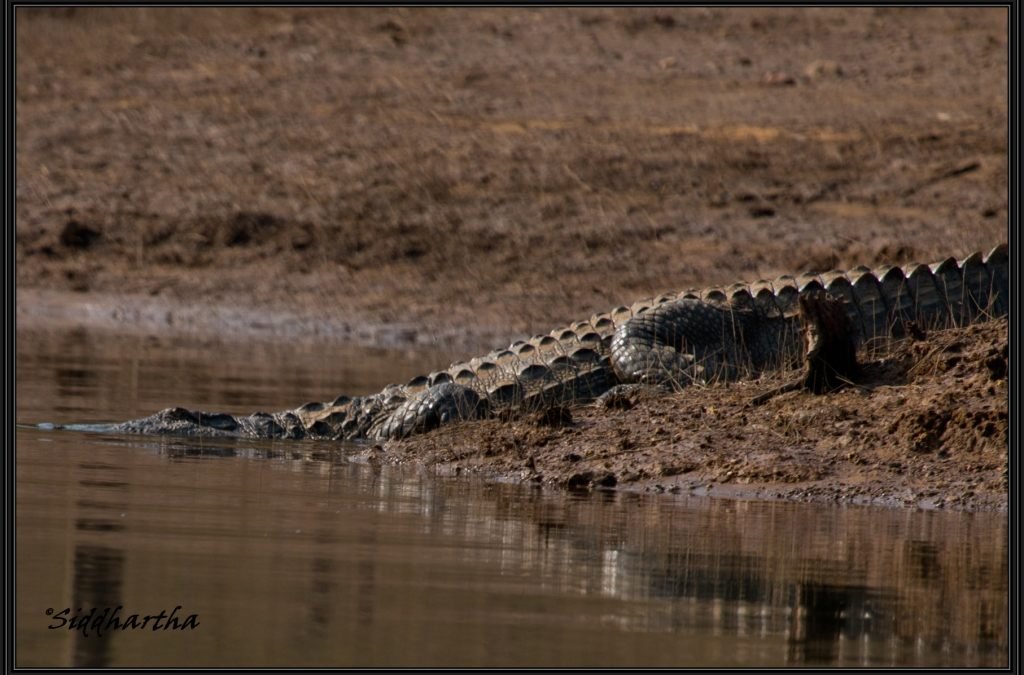
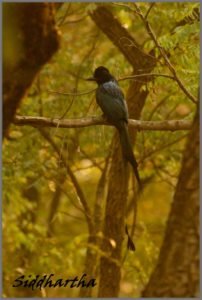
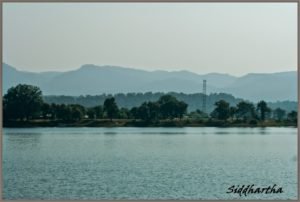
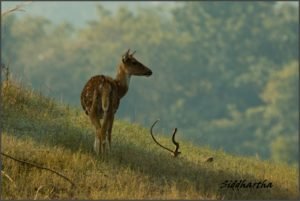
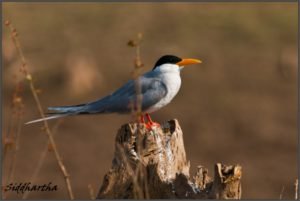
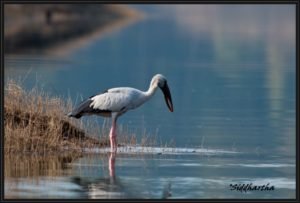
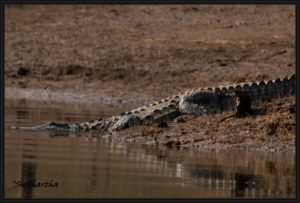
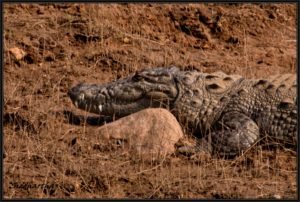
Recent Comments